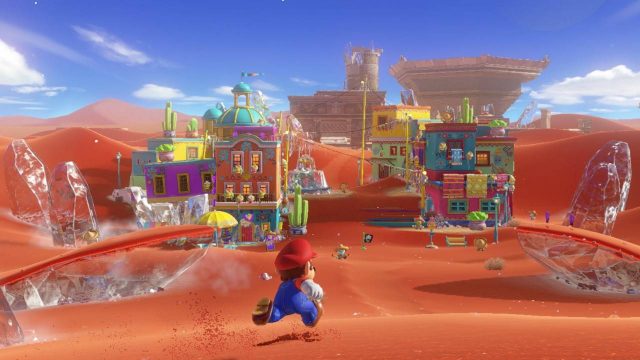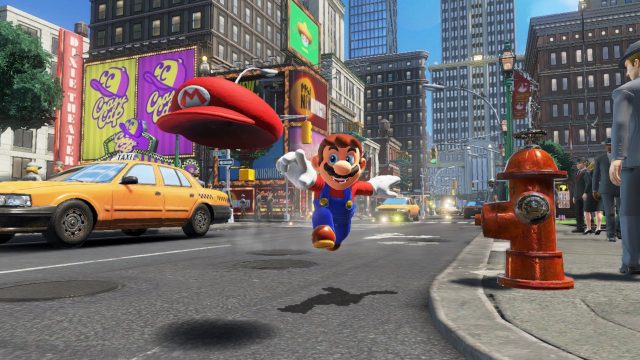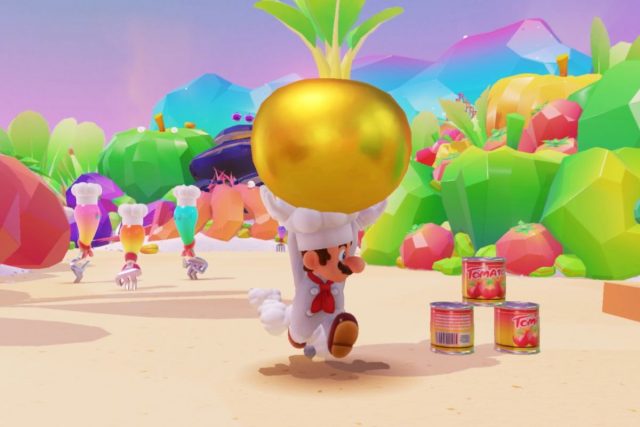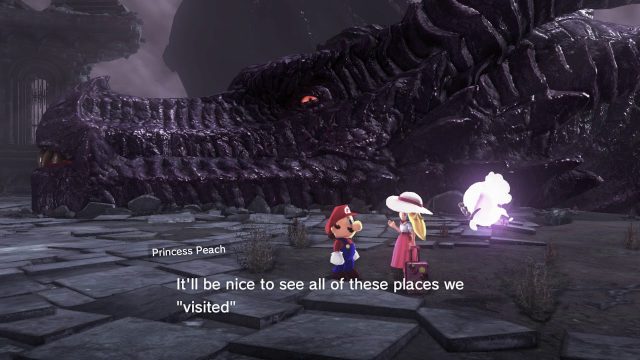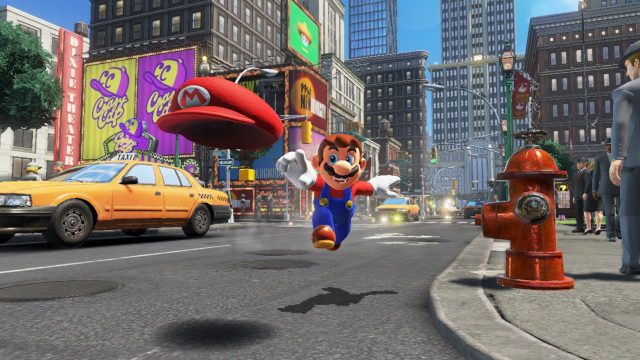Super Mario Odyssey for Nintendo Switch – Nintendo Game Details
Description
Super Mario Odyssey is a 3D Platformer published by Nintendo. It features Nintendo’s flagship character Mario, as he traverses around the world with his sentient hat, Cappy, in order to save Princess Peach and Cappy’s sister from a forced marriage with Bowser. Typical Mario stuff. Released in 2017, it was a nominee for game of the year alongside notable titles such as Persona 5, The Legend of Zelda: Breath of the Wild, as well as Horizon Zero Dawn.
Super Mario Odyssey – Game Trailer – Nintendo E3 2017 – YouTube
Super Mario Odyssey – Nintendo Switch Presentation 2017 Trailer – YouTube
Lens 9: The Elemental Tetrad
In Super Mario Odyssey, the game successfully ties together the various elements (aesthetics, technology, mechanics and story) into one cohesive package.
The Story
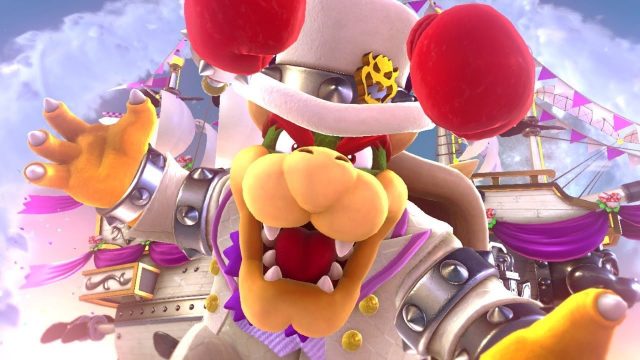
Super Mario Odyssey has a simple story, as per usual platforming Mario games, with most of the emphasis placed more on the mechanics. However, Mario Odyssey does something which most of its predecessors does not, which is to make each distinctly different role have some level of cohesion to the theme of the game.
In the story, after kidnapping Peach, Bowser goes to different kingdom and steals a particular item (wedding dress, a diamond, famous stew, etc.) which would play a part in the wedding. Mario, having a semi-functioning ship, has to go to each kingdom in order to gain more stars to fuel his ship, whilst resolving the issue that was left over by Bowser.
This all directly plays into the theme of an odyssey, where Mario is made to go on this voyage around the globe in order to catch up with Bowser. It’s a subtle touch, but adds a layer of cohesion that’s not usually seen in other 3D Mario games. In such a case, most worlds and bosses are mostly just temporary obstacles rather than existing as a unit for storytelling.
The Mechanics
In practically all 3D Mario games, he possesses his usual suite of jumping and movement abilities, including the triple jump, the long jump, backflip, and more. In addition, he usually gains a separate ability unique to the game in question. For Super Mario Odyssey, this is the Cap Throw.
The Cap Throw allows Mario to do one key thing: Take possession of another entity. This can include electricity, enemies, and even a DINOSAUR.
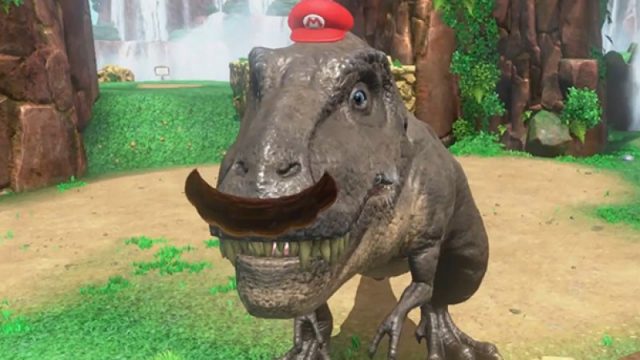
The goal of each kingdom is to collect enough moons in order to power up the ship to allow Mario to catchup with Bowser. Each kingdom showcases its own theme, from a realistic New York-esque city, to a low polygonal cooking themed volcano town. The contrast designed really shows the Odyssey-like nature of the game, with each kingdom being ever so different from the other.
Technology
Super Mario Odyssey was built for the Nintendo Switch, and its joycon controllers pair well with the mechanics of the game. There are multiple joycon motions available which would allow Mario to use his cap in a multitude of ways.
Aesthetics
Super Mario Odyssey’s aesthetics further reinforce the nature of an odyssey. Barring the designs of Mario and common enemies in the game, each kingdom showcases a drastically different style from one another, bolstering the idea that Mario is far from home and is on an epic journey around the world.
As such, it can be seen that Super Mario Odyssey successfully melds the 4 elements together seamlessly, creating a thoroughly cohesive game worthy of its praise and accolades.
Lens 1: Emotion
The way the game is setup is to give the player a sense of wonderment that one might have when they travel overseas. The unique designs and themes of each kingdom is testament to that fact.
A sense of nostalgia is also prevalent in a certain sequence of the game, where Mario pays homage to the first Donkey Kong game in a festival that has an overall feel-good factor.
Super Mario Odyssey – Pauline Band Festival w/ Jump Up Super Star – YouTube
Lens 5: Fun
Super Mario Odyssey is a game that does not lack any breadth or depth. The sheer number of collectible moons are sufficient even for the most hardcore of players. The variation in the puzzles and hidden areas for each moon is also far reaching, and despite the seemingly simplistic nature of the mechanics, the combinations that come from optimization are seemingly endless and drastically magnifies the fun derived from the game.
Lens 8: Problem Solving
Super Mario Odyssey boasts a myriad of puzzles for the player to solve in order to find moons. Some are literally just sitting in a corner, whilst others require a bit of platforming skill to get to. Some require to answer a few questions in a quiz, whilst others require you to solve a simple puzzle from different ends of the map to complete. The variety is magnificent, which keeps players on their toes and always coming back for more as they do not know what to expect.
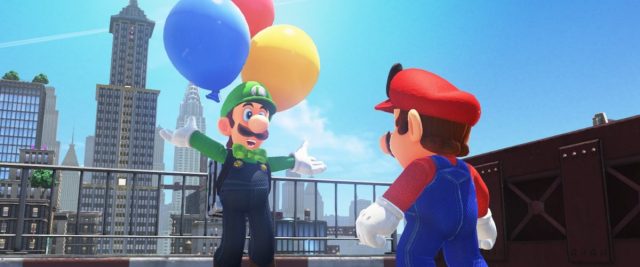
Additionally, an added segment named ‘Luigi’s Balloon World’ sees the player seek out balloons that other players have hidden across the map with a time limit. The player is also able to hide his own balloons. The PVP structure of this minigame expands the scope of problem solving in this game as we pit players against one another to see who can pop the other’s balloon. Multiply that with more than 10 kingdoms, and it’s easy to see why players would continue coming back.
Conclusion
Super Mario Odyssey pog.
Lens 27: Time
Super Mario Odyssey is a game that is accommodating to different player styles. The length of the game is largely determinant on the player style. If one is more of a completionist, he/she would definitely spend a lot more time trying to collect the over 800 moons available in the game. For players that are more casual, a mere 120 moons are required to to complete the game, with 500 for the true ending. If one so wishes to skip finding moons, he/she can simply buy them at a shop at an infinite amount!
This accessibility to different player types easily accommodates players such that they would not find frustration or boredom in having to play the game for too long or too short.

